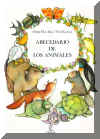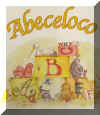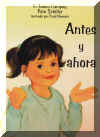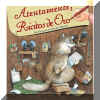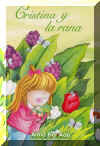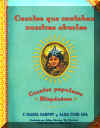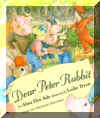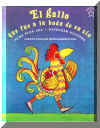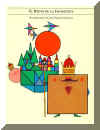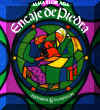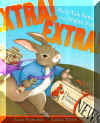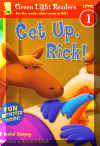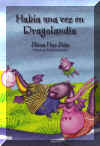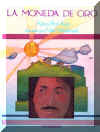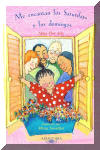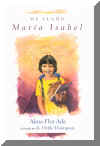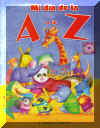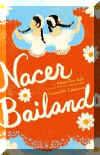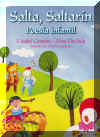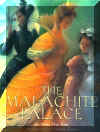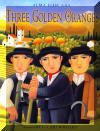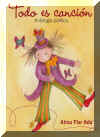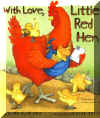
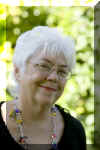 Authors : Alma
Flor Ada and F.
Isabel Campoy, Illustrators : Felipe Davalos, Susan Guevara, and Leyla
Torres, Contributor : Felipe Davalos
Authors : Alma
Flor Ada and F.
Isabel Campoy, Illustrators : Felipe Davalos, Susan Guevara, and Leyla
Torres, Contributor : Felipe Davalos 3rd Grade and Up

 Authors : Alma
Flor Ada and F.
Isabel Campoy, Illustrators : Felipe Davalos, Susan Guevara, and Leyla
Torres, Contributor : Felipe Davalos
Authors : Alma
Flor Ada and F.
Isabel Campoy, Illustrators : Felipe Davalos, Susan Guevara, and Leyla
Torres, Contributor : Felipe Davalos
3rd Grade and Up
Cuentos que contaban nuestras abuelas
Tales Our Abuelitas Told
 Cuentos que contaban nuestras abuelas, Softcover, Spanish, Book, Alma
Flor Ada and F.
Isabel Campoy, Felipe Davalos, Susan Guevara, and Leyla Torres, Felipe
Davalos, 3rd Grade and Up, 9781416939658, $12.99
Cuentos que contaban nuestras abuelas, Softcover, Spanish, Book, Alma
Flor Ada and F.
Isabel Campoy, Felipe Davalos, Susan Guevara, and Leyla Torres, Felipe
Davalos, 3rd Grade and Up, 9781416939658, $12.99
 Cuentos que contaban nuestras abuelas,
Hardcover, Spanish, Book, Alma
Flor Ada and F.
Isabel Campoy, Felipe Davalos, Susan Guevara, and Leyla Torres, Felipe
Davalos, 3rd Grade and Up, 9781416919056, $19.95
Cuentos que contaban nuestras abuelas,
Hardcover, Spanish, Book, Alma
Flor Ada and F.
Isabel Campoy, Felipe Davalos, Susan Guevara, and Leyla Torres, Felipe
Davalos, 3rd Grade and Up, 9781416919056, $19.95
Cuentos que contaban nuestras abuelas,
Spanish,
2 CDs, Alma
Flor Ada and F.
Isabel Campoy,
3rd Grade and Up, $29.95 Listen
Tales Our
Abuelitas Told, Hardcover, English,
Book,
Alma
Flor Ada and F.
Isabel Campoy, Felipe Davalos, Susan Guevara, and Leyla Torres, Felipe
Davalos, 3rd Grade and Up, 9780689825835, $19.95
Watch
$277.52 for the Story Collection Green Books and CDs Spanish Set, Including 20%-Off, Free Shipping, and No Sales Tax : 1 Hardcover Spanish Book, 15 Softcover Spanish Books, 2 Softcover Spanish Oversized Books, 1 Spanish Big Book, 2 Spanish Storytelling CDs, 1 Bilingual Storytelling CD, and 1 Spanish Music CD
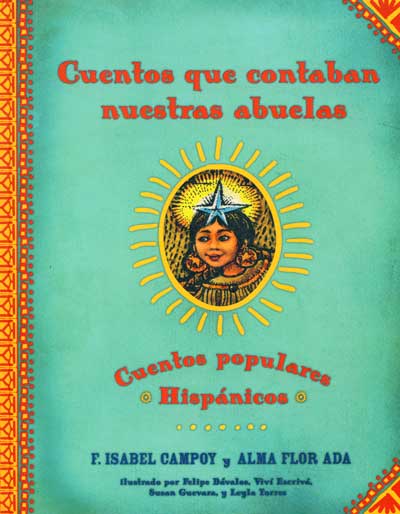 American Federation
of Teachers' Colorín Colorado's Website, Featured Book of the Month
American Federation
of Teachers' Colorín Colorado's Website, Featured Book of the Month
Kirkus Review, List
of 100 Best Children´s Books for 2006
Literary Guild Award
New York Public
Library, List of Best Children´s
Books for 2006
Nick Jr. Magazine, List
of Best Children´s Books for 2006
Parent´s Choice Recommended
Children´s Books for 2006
Authors' Note : Writing Tales Our Abuelitas Told was for me a way of honoring my extraordinary grand mother, Dolores Salvador, as well as and an expression of love and hope for my nine grandchildren, as I have expressed in my dedication. I am sure it means some thing very similar for Isabel, whose dedication is to her great-nephew Pablito. We are very grateful that these beloved tales are being so well received assuring that their continue to live for all children.
Traditional tales open our hearts to old voices and new worlds, to wondrous adventures and ever lasting feelings. Words like Había una vez or Érase que se era, hold for the listener or reader the magic promise of enchantment.
The stories retold Tales Our Abuelitas Told or, in the Spanish version Cuentos que contaban nuestras abuelas, reflect the diversity of our culture: some developed in Latin America from Indigenous roots, others had their origin in Africa or in various regions of Spain and go back to the Hebrew, Arabic or Basque traditions.
Their settings may be Mexico or the Southwest, Puerto Rico, Cuba or the Amazon among many others. They all keep children spellbound. Stories like these enriched our childhood and left our ima ination for ever open to new discoveries, to the daring possibility of dreaming better worlds. Words like ¨happily ever after¨ got trans formed into lives in search of understanding and compassion, lives devoted to pro mote access and equality for all, social justice, and peace.
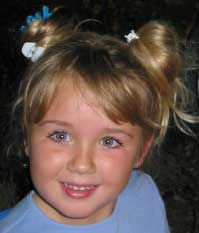 Listen to Vienna Rose read
Tales Our Abuelitas Told to you. A marvelous example of the magical encounter
between a child and books that we wish for all children. And
here's the book's
introduction read to you by Vienna Rose. And here's an earlier
reading by Vienna Rose.
Listen to Vienna Rose read
Tales Our Abuelitas Told to you. A marvelous example of the magical encounter
between a child and books that we wish for all children. And
here's the book's
introduction read to you by Vienna Rose. And here's an earlier
reading by Vienna Rose.
From Catalina the Fox : "Stop, you rascal!" shouted Catalina, the fox, as she saw MartÍn, the wolf, rushing out of her orchard. Once again he has been stealing her reddest apples, her sweetest pears, her freshest eggs, and her fattest hen -- all the while laughing as he escaped. "Someday that wolf is going to get it!" Catalina muttered to herself. Catalina was so angry that she decided to go for a walk to calm herself. As she walked along the road, she saw a man approachng on a horse-drawn cart. She remembered much too well having been shot at by a man on a similar cart the previous fall. Since there was nowhere to hide, she thought the best way to avoid the trouble was to pretend to be dead. So she laid down by the side of the road. "A dead fox!" cried out the man in the cart. "I can use that fur." The man climbed down from his cart, took the fox by the tail, and swung her up on top of the fish barrels that he was taking to market. This was not exactly what the fox had planned, but she remembered her grandmother's advice: "Look for the good that is hidden inside every bad situation." The only good thing she could see were the sardines in the fish barrels beneath her.
From The Little Horse of Seven Colors : "I am worried," said Don Ramón to his wife, Clotilde, and their three sons. "An animal has been eating our corn, but I cannot find any tracks going to or coming from the cobertizo. Diego, tonight you will kep watch to see what happens." That night Diego went to the cobertizo -- the adobe hut where they kept the corn -- but he quickly fell asleep. The next morning, realizing he had failed at his task and afraid of making his father mad, he dais, "I stayed up all night for nothing. Nobody came to the cobertizo." Adn yet more corn has disappeared. The following night Vincente, the second son, was assigned to keep watch. He tried to keep alert, but after a few hours he fell asleep too. In the morning he also reported that nothing had happened. But, again, corn was missing. On the third night Pedro, the youngest brother, went to the cobertizo for his turn. He was determined not to fall asleep. Diego and Vincente always teased him, saying that he had a rock instead of a head on his shoulders. Pedro wanted to prove to them that he was just as smart as they were.
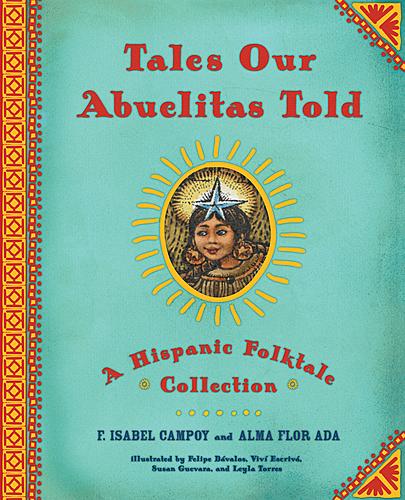 School Library Journal : Grade 3
Up The introduction to this delightful collection explains clearly how
stories develop and change over time; in fact, the two storytellers heard most
of these amusing tales when they were children and have retold them many times
since in their own unique styles. Each retelling is accompanied by a brief
description of its origin. Included are tales about dancing goats, a turtle that
outwits a deer, and a beetle that declares war on a cow; all of the selections
are peppered with energetic dialogue and witty detail. Children will relish
their humor, especially if read aloud, and teens will also enjoy this lively
presentation. Traditional story beginnings and endings are provided in Spanish
and translated into English, including one foreboding opening: In a land where
you will go but from where you will never return. Four Latino artists provide an
interesting variety of illustration. Featured images include a large goat head
in a vegetable garden, a large farmer on a very small burro, and a wolf and fox
all decked out in finery dancing together. The last page provides information
about the authors and illustrators.
School Library Journal : Grade 3
Up The introduction to this delightful collection explains clearly how
stories develop and change over time; in fact, the two storytellers heard most
of these amusing tales when they were children and have retold them many times
since in their own unique styles. Each retelling is accompanied by a brief
description of its origin. Included are tales about dancing goats, a turtle that
outwits a deer, and a beetle that declares war on a cow; all of the selections
are peppered with energetic dialogue and witty detail. Children will relish
their humor, especially if read aloud, and teens will also enjoy this lively
presentation. Traditional story beginnings and endings are provided in Spanish
and translated into English, including one foreboding opening: In a land where
you will go but from where you will never return. Four Latino artists provide an
interesting variety of illustration. Featured images include a large goat head
in a vegetable garden, a large farmer on a very small burro, and a wolf and fox
all decked out in finery dancing together. The last page provides information
about the authors and illustrators.Children's Literature : A six-page introduction welcomes readers and offers historical background into the ways that folktales originated and intermingled in all cultures. The twelve Hispanic tales actually have roots in many ancient traditions. The conversational tone continues into the retelling of the selected tales ranging in length from three to seventeen pages (including at least one full-page illustration for each). A few of the tales will seem somewhat familiar. "Dear Deer! Said the Turtle" is reminiscent of "The Tortoise and the Hare." "The Castle of Chuchurumbe" has a rhythm similar to "The House That Jack Built." Catalina the Fox could be related to Brer Rabbit. Other tales bring fresh, new perspectives. Pedro saves his family's corn and, eventually, finds great happiness because he befriends a little horse of seven colors and follows its advice. A caliph and his son discover the source of true happiness in unexpected places. Research and explanatory notes follow each tale. Colorful illustrations capture the mood of the narrative, often contributing to understanding of the text and adding humor. The artists are given individual recognition in the table of contents. A listing of traditional folk tale beginnings is provided in both Spanish and English in the front of the book. A similar listing of endings appears in the back. The large-style format lends itself well to both individual reading and group sharing.
Simon Brooks : I have gone into
the studio to begin recording what is most likely to be called “More
Second-hand Tales.” I know, amazingly original, isn’t it? For
those who saw me over this summer, you might remember me telling the story
‘The Goat from the Hills and Mountains.” This tale was new to me this
year and I have fallen in love with it. It is based on an Hispanic tale I
found in a marvelous book called TALES OUR ABUELITAS TOLD by F. Isabel Campoy
and Alma Flor Ada, published by Atheneum. I could not find an original
source for the story, or any other version of it, so I approached the authors
for permission to continue telling the tale and also for permission to record
it, on this soon-to-be-made second CD. After a few emails with both
writers I have permission to continue to tell the story AND record my version of
Alma Flor Ada's version of this story which appears in the book. The book
is wonderful, and there are many other great stories in there. If you are
looking for a holiday gift to give someone this coming winter season, be it
Christmas, Chanukah, Quanza, or any other holiday, or birthday even, then look
this book over. It is not a ‘dry’ folklore book, but a book filled
with the life and vitality which makes Hispanic stories so wonderful. It
is also illustrated in a style that captures the tales in a unique way that kids
love. I know this as we have a copy of it at my library. Many thanks
to Isabel and Alma for graciously allowing me to take this tale and put it on my
second CD.
Amazon : Once upon a time, in
a land far away...These stories have journeyed far -- over mountains, deserts,
and oceans -- carried by wind, passed on to us by our ancestors. Now they have
found their way to you. A sly fox, a bird of a thousand colors, a magical
set of bagpipes, and an audacious young girl...A mixture of popular tales and
literary lore, this anthology celebrates Hispanic culture and its many roots --
Indigenous, African, Arab, Hebrew, and Spanish. F. Isabel Campoy and Alma
Flor Ada have retold twelve beloved stories that embody the lively spirit and
the rich heritage of Latino people. The work of four leasing Latino
artists and illustrators highlights this unforgettable collection.
Blog : Tales Our Abuelitas Told is a lovely collection of Hispanic folktales from many different cultures, written/retold by F. Isabel Campoy and Alma Flor Ada. Abuelitas is an endearment in Spanish for "grandmothers," and these tales, full of life lessons, are told with the loving care of our grandmothers.
These stories have journeyed far -- over mountains, deserts, and oceans -- carried by wind, passed on to us by our ancestors. Now they have found their way to you.
A sly fox, a bird of a thousand colors, a magical set of bagpipes, and an audacious young girl ... A mixture of popular tales and literary lore, this anthology celebrates Hispanic culture and its many roots -- Indigenous, African, Hebrew, and Spanish.
In the introduction to the book,
the authors explain the history of Hispanic folklore, which I found fascinating.
Twelve tales are retold and beautifully illustrated, each one ending with a
brief explanation of the different versions of the story and the authors'
connections to it. My favorite was "The Happy Man's Tunic," a story
brought to Spain most likely by the Arabs. In the story, a caliph was too busy
to spend time with his kind and loving son. When his son became ill, the caliph
consulted many physicians. But when none of them could find the right cure, and
he despaired, an old woman came to him and told him that all his son needed to
get well was to wear the tunic of a man who is truly happy. The search was on,
and a young shepherd was finally found who proved to be a truly happy man. The
problem was...he didn't own a tunic! It's a fun story with an important message,
but I won't give it away here.
The authors also included a fun list of traditional beginnings and endings to
stories told in Spanish, side by side with their English-language equivalents:
Había una vez... Once upon a time...
En los tiempos e la abuela... In Grandmother's time...
Hace mucho tiempo... A long time ago...
...y colorín colorado, este cuento se ha acabado. ...and, my many-colored
feathered friend, now the story has found an end.
It's exciting to find a book of folktales that is done so nicely. This is a
lovely book, beautifully written and illustrated, and it would be a great
addition to a family's collection of folktales, and a wonderful book to use as a
teaching tool in school for any age group.
Latina
Style : From
Yesterday to Tomorrow :
Stories Our Abuelitas Told
Traditional tales open our hearts to old voices and new worlds, to
wondrous adventures and ever lasting feelings. Words like Había
una vez or Érase que se era, hold for the listener or reader the
magic promise of enchantment.
The stories retold in our recent book Tales Our Abuelitas Told or,
in the Spanish version Cuentos que contaban nuestras abuelas, reflect the diversity of our
culture: some developed in Latin America from Indigenous roots,
others had their origin in Africa or in various regions of Spain
and go back to the Hebrew, Arabic or Basque traditions.
Their settings may be Mexico or the Southwest, Puerto Rico, Cuba or the Amazon among many others. They all keep children spell-bound. Stories like these enriched our childhood and left our imagination forever open to new discoveries, to the daring possibility of dreaming better worlds. Words like ¨happily ever after¨ got transformed into lives in search of understanding and compassion, lives devoted to promote access and equality for all, social justice, and peace.
Because
we have known the power of words, we have been using them to share
with Latino children and youth the vastness of their rich heritage
and to make others aware of this richness. Through the ample
collection Gateways to the
Sun, or in the Spanish version Puertas
al sol we have invited them, through Poetry anthologies, to delight in the images and rhythm of our
great poets. Through Theatre anthologies we give our readers the
opportunity to explore their feelings and those of others.
Biographies of great figures like Benito Juárez, José Martí or
César Chávez, of creators like Frida Khalo, Gabriela Mistral or
Luis Valdés give them inspiration to fulfill their own
potentials. Books on the Art of our numerous artists of all times
encourage them to find beauty in art, in nature and in their own
hearts, and the books about Hispanic
Lands in this collection
depict for them not only the diversity of those lands and their
amazing nature but particularly the contributions their people,
beginning with the indigenous cultures, have made to the world.
Nursery rhymes are frequently the first introduction to poetry and
the music hidden in language, an introduction whose joy can last a
lifetime. During our frequent travels and public appearances we
constantly receive the response of parents and teachers to the
nursery treasures in the bilingual books Pio
Peep, Mama Goose
and our
collection of books and accompanying CDs with 120 songs in the
voice of Suni Paz, Música amiga. They tell us what
a joy it is to reencounter the songs that made them laugh, sing
and dance in their own childhood and to share it with their
children, grandchildren, nephews and nieces, making sure these
songs will continue to live on. And what greater joy for us than
to meet children who know by heart our poems and delight in saying
or singing them.
Recently, in Texas an educator told us that someone in the family
¨took away the nursery rhymes book¨ leaving everyone else ¨orphaned
of memories¨ until she purchased six copies, one for each sister,
to restore the vacuum left by the missing original.
As parents and grandparents ask us to autograph books, or
expectant mothers wish us to create a message for their yet unborn
children, we delight seeing that the interest on this culture and
the commitment to create a bilingual foundation for their youth
come both from Spanish-speaking and English-speaking families.
May the treasures we received continue living in the hearts of the new generations.
Twelve stories from varied roots of Hispanic culture come together in a colorful collection that includes talking ants, magic bagpipes, dancing goats, and flying horses. In some cases the tales emphasize a moral, such as looking for the good in any bad situation as in “Catlina the Fox.” In others, the story illustrates the importance of friends, as in the case of “The Bird of One Thousand Colors.” The authors seek to trace the origins of the stories through personal source notes, citing variants of the original story and the historical history behind the tales. Of note is a tale of Juan Bobo that is included in this collection. Juan Bobo has entertained children and adults for more than five centuries with his antics and absent-mindedness. While Juan Bobo is well known by many, “The Bird of One Thousand Colors” is a story that Alma Flor Ada was unable to trace to an original source, although she remembers being told the story by her grandmother. Throughout the collection, culturally accurate illustrations catch the eye with vivid colors and intricate details that convey aspect of the story. Each story leads naturally to the next, keeping alive the oral traditions of a rich culture that spans the continents. - Christine
The Children's Book
Review : Isabel Campoy is a scholar devoted to the study of language acquisition. She is a well-known author of numerous children’s books in the areas of poetry, theatre, folktales, biographies, and art. She is the recipient of many notable awards, including the Reading the World Award 2004, for “Cuentos que contaban nuestras abuelitas;” and the Junior Library Guild Premier Selection Award, 2006.
TCBR: As a writer, you have a strong focus on the culture and civilization of the Hispanic world. Can you share a little on your background and how you became a children’s book writer?
F. Isabel Campoy: I cannot remember a time in my life in which I wasn’t part of the world of children’s literature. As soon as I learned to read I became the person that teachers chose to read out loud to the rest of the class while they did art, or sewing. I had a good voice and I couldn’t hold a thread and needle for more than two seconds, so it was a perfect match to keep everyone busy. That practice stimulated the writer in me and when I was eleven-years-old I published my first tale in a local magazine. I continued writing throughout my childhood. When I came to the U.S. for the first time at age fifteen in 1963, writing kept me alive through the difficult moments of missing my family (I was here as an AFS exchange student), and conquering my fears after the tragic assassination of John Fitzgerald Kennedy on November of that year.
My first job after college was as an assistant editor in Madrid. I applied to the position because it was my way to be part of the publishing world. Later I was offered the opportunity to co-author with Phillip Locke a series for the teaching of English, my responsibility being to provide the literary texts. I left publishing many years later. At the time, I was a Senior Acquisitions Editor for College publications in a company in Boston. I realized then that the joy of publishing others was hiding my fear to publish my own manuscripts… so I finally quit everything and became a full time writer.
I love to travel. I am interested in the places, the people, and their histories. When I began writing for children I wanted to contribute to present the cultural richness of Latino history, art, and literature for readers in this country. There is much to be written about our culture.
Tales Our Abuelitas Told: A Hispanic Folktale Collection is one of the many books you have written with Alma Flor Ada. Why do you think so many readers are drawn to your retellings of these particular folktales?
Authors love all their books, but there are some that connect with you in a very personal way. “Tales Our Abuelitas Told” was published the year I lost my mother. She was the greatest storyteller, imaginative, soft spoken, and these were tales she had told us growing up. I wrote some of the stories for this book by her side. At the time I was the one who would read to her, to make her forget pain, to keep a smile in her beautiful face.
I remember each line in that book and how she reacted to my reading of the stories I was writing. Because she knew the storyline so well, she would frequently interrupt me to say: “That is not exactly how I told you that story” …when I was using some literary freedom in my re-telling. Those moments are my greatest treasure of her memory, now.
I have given readers the echo of my mother’s voice through the beauty of our folklore. I am sure she is enjoying the success of her tales…now in a fourth hardcover reprint.
Does there appear to be a favorite folktale amongst the readers of your book?
I could probably say that all of them, but “The Story of the Not-So Small Animal” is one that I like to tell when I visit schools because I love the landscape and the people of the Basque country. I tell children how so many of them brought their skills as shepherds to the mountains of Idaho. I like this story also because it is one in which the little creatures, together, win the battle against the big animals. I like that!
Four leading Latino artists created the stunning artwork in the book: Felipe Dávalos, Viví Escrivá, Susan Guevara and Leyla Torres. How do you feel about the illustrations and the extra dimension that they bring to the tales?
Our friendship with these artists has created more than one collaboration that resulted in great published books. But here they are all together, each one bringing their talent, point of view of the story and energy, and the result is magnificent. It is an honor to have them all in here.
Viví Escrivá has been a frequent collaborator with us. Together we published “Pio, Peep! and !Muu, Moo!, two of our first Nursery Rhyme collections with HarperCollins. Felipe Dávalos put wind underneath important books such as “The Quetzal’s Journey”, “On the Wings of the Condor”, and “Eyes of the Jaguar”.
You have many published books. Which book from your own esteemed list of published titles would you consider to be the most personally rewarding?
I love art, sometimes I try my hand at painting and sculpting, and having had the opportunity to present to children the richness of Hispanic art has given me great satisfaction. “ Blue and Green”; “Brush and Paint”; ”Artist’s Easel”; and “Canvas and Paper” are four of our art books (written with Alma Flor Ada). But I find writing biographies a very special challenge that I welcome. When I fall in love with a character, I want my readers to love him/her too. For that to happen, every word must be chosen carefully. In our series “Gateways to the sun” we wrote about twelve very special personalities from the world of science, leadership, media, art, and literature.
Alma Flor Ada and yourself have a forthcoming book Yes! We Are Latinos, which combines free verse portrait of Latino and Latina children of very different backgrounds living in different parts of the country. When should we expect to see this book on the shelves?
It is in the hands of the illustrator. The publisher’s goal was 2012. I hope we make it on time!
That is an important book in our careers. We opened our heart and we wrote with passion about who we are, all of us, Latinos in this country.
Which books from your own childhood have most influenced your life? I continue to find “Platero y yo” by Juan Ramón Jimenez a source of inspiration. I go back to its pages when I want to remember my childhood.
I never understood “Don Quixote” by Miguel de Cervantes until I grew up, but when I did, I realized I have been Don Quixote half of my life and Sancho Panza, the other half.
Do you have anything specific that you want to say to your readers? I want to express my gratitude to them. I wrote a haiku to say precisely that:
Gratitude is a golden bird, Perched in the branches of your heart, May its voice be heard!
Story
Collection Green Books and CDs
:
